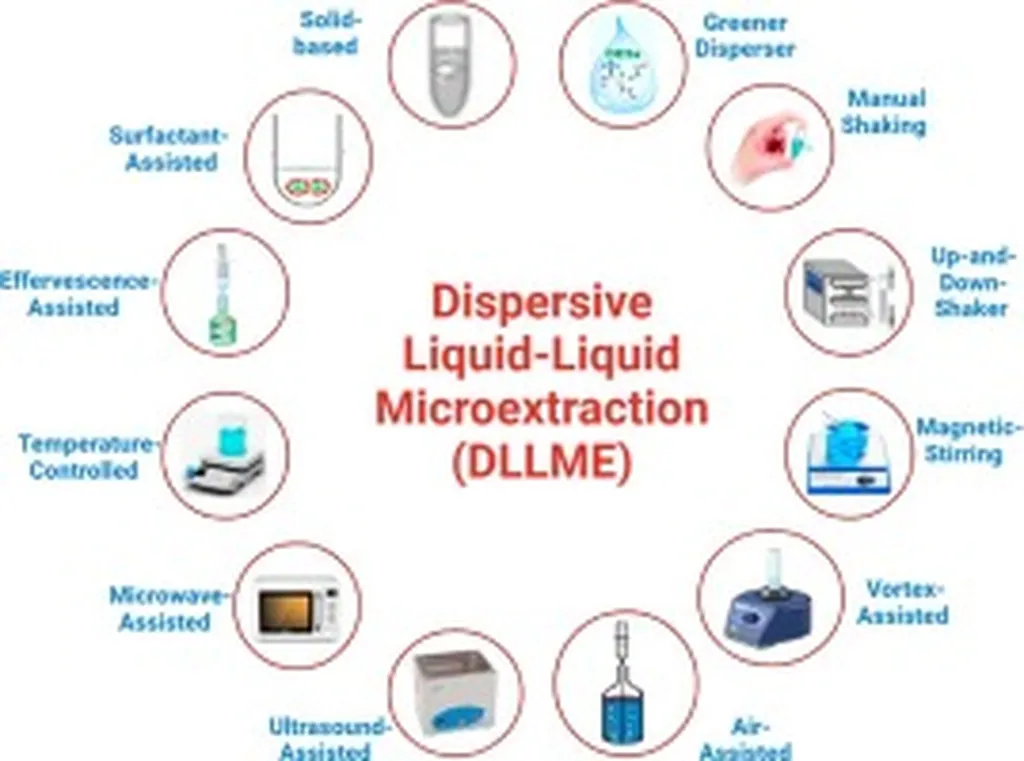In the ever-evolving landscape of agricultural technology, a groundbreaking review published in *Talanta Open* (translated as “The Open Analyst”) is set to revolutionize the detection of organophosphorus pesticides (OPPs), a critical concern for both environmental safety and public health. Led by Marzieh Fallahi Nezhad from the Department of Chemistry at Amirkabir University of Technology in Tehran, Iran, the research delves into the latest advancements in solvent extraction methods, particularly Dispersive Liquid–Liquid Microextraction (DLLME), which promises to enhance efficiency while minimizing the use of harmful chemicals.
The study highlights the integration of physical assistance methods such as ultrasound, vortex, and air-assisted techniques to improve extraction efficiency. These methods are not only more environmentally friendly but also crucial for detecting OPPs, which are widely used in agriculture and known for their neurotoxic effects. “The acute neurotoxicity and environmental persistence of OPPs make their detection at trace levels imperative for ensuring public safety and regulatory compliance,” Fallahi Nezhad emphasizes.
The review critically examines the potential of these greener DLLME techniques to reduce or eliminate the use of toxic organic solvents and disperser agents. By comparing enrichment factors, extraction times, and analyte recoveries across various sample types—including environmental water, biological fluids, and food products—the research underscores the significance of these advancements. “Our findings suggest that these innovative methods contribute to sustainable analytical practices, paving the way for a future where solvent-free and disperser-free extraction systems are the norm,” Fallahi Nezhad adds.
The implications of this research extend beyond the agricultural sector, with potential impacts on the energy sector as well. As the demand for sustainable and efficient extraction methods grows, these advancements could lead to the development of new technologies that minimize environmental impact while maximizing efficiency. The study also discusses future directions, including hybrid and energy-assisted strategies, which could further enhance the capabilities of DLLME systems.
Published in *Talanta Open*, this review serves as a beacon for researchers and industry professionals alike, highlighting the critical role of innovative extraction methods in ensuring environmental safety and public health. As the world continues to grapple with the challenges posed by hazardous contaminants, the insights provided by Fallahi Nezhad and her team offer a promising path forward, shaping the future of analytical chemistry and beyond.

